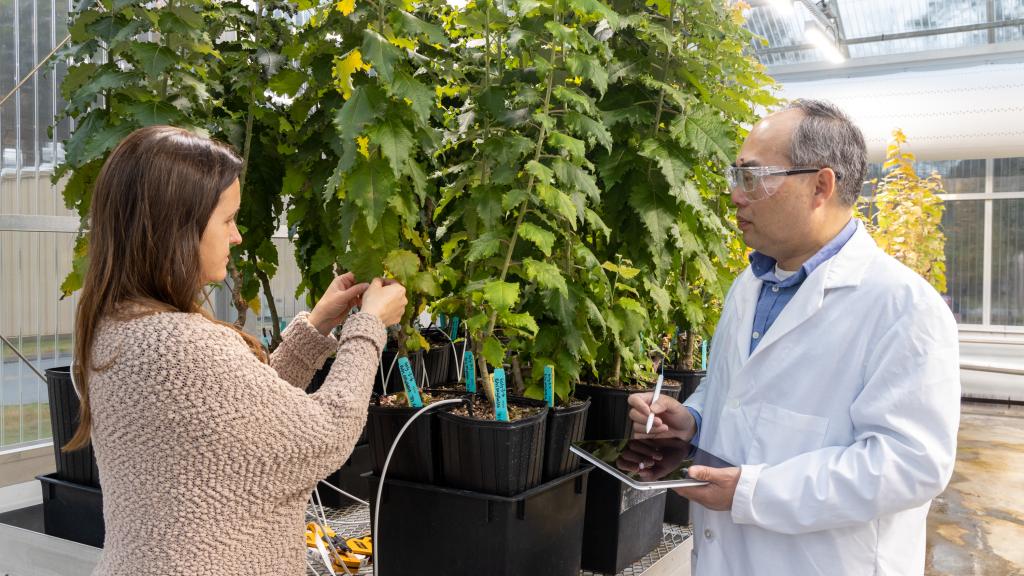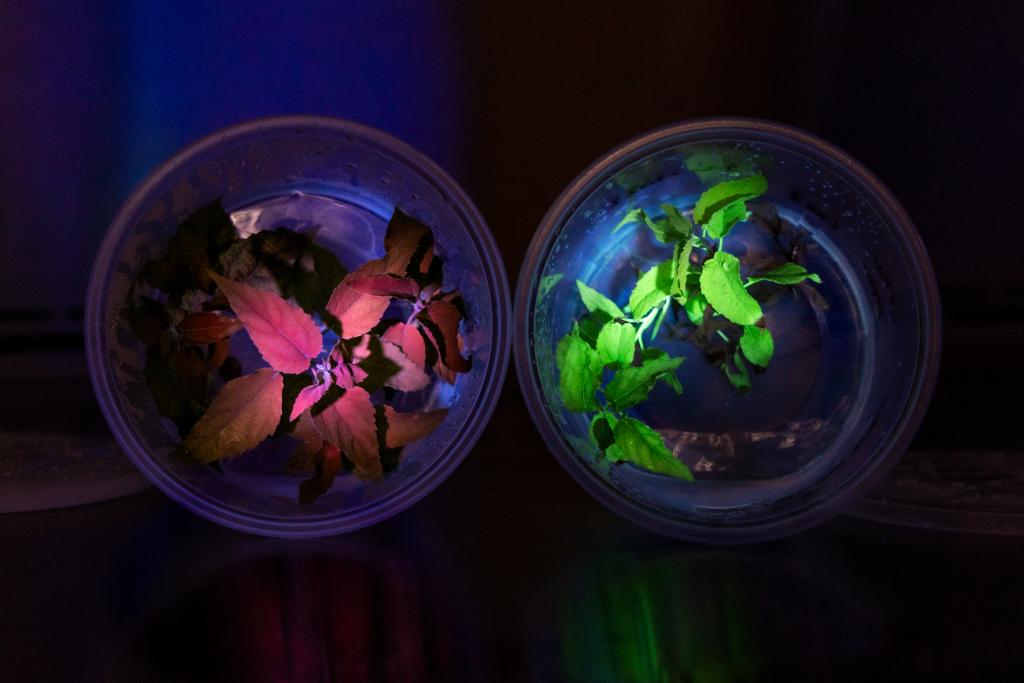
Nature-based solutions are an effective tool to combat climate change triggered by rising carbon emissions, whether it’s by clearing the skies with bio-based aviation fuels or boosting natural carbon sinks. At the Department of Energy’s Oak Ridge National Laboratory, scientists are leading research to transform plants into key drivers of decarbonization, from creating biomass crops for new fuels to enhancing the ability of plants to absorb and store carbon.
Plant scientists, geneticists, chemists and engineers at ORNL have been developing pathways for better bioenergy crops for 15 years as part of the DOE’s Center for Bioenergy Innovation. During that time, the research teams have developed multiple capabilities to create plants with desired traits such as disease and pest resistance, drought tolerance, reduced need for fertilizer and better carbon storage.
ORNL brings a range of expertise and tools to the tasks of identifying the genetic triggers for preferred plant traits, creating those genetic pathways and inserting genes into wild-type plants, growing new hybrids and analyzing whether the resulting plants demonstrate the sought-after attributes. The goal has been to not only create better plants, but also speed the work so that solutions can be put into practice quickly to help prevent and respond to a changing climate.
"We’re working toward an automated, high-throughput approach to developing better plants,” said Jerry Tuskan, chief executive officer of CBI and Corporate Fellow scientist at ORNL. The work is accomplished in three steps: 1) using molecular biology to identify and build gene constructs; 2) transforming plants as scientists insert genes linked to desired traits and replicate the plant; and 3) accelerating observation of physical traits, or phenotyping, using robotics and artificial intelligence to quickly analyze resulting hybrids. “We’re creating new and innovative techniques for all three of those steps,” Tuskan said.
ORNL scientist Xiaohan Yang leads a range of efforts related to plant transformation. “The goal is a system that can create precision-engineered plants with methods to quickly identify helpful genes, implant multiple genes in a single step, and then use automatic, non-destructive, biosensor-facilitated phenotyping to quickly assess whether the new hybrids are a success,” he said.
The lab also facilitates the impact of these successes by licensing its technology and encouraging strategic collaborations with private and public-sector partners. More information is available at the ORNL Technology Transfer portal. Below are some examples of discoveries supporting a precision plants pipeline:

New method speeds identification of gene function in plants
Researchers identified specific proteins and amino acids that could control bioenergy plants’ ability to identify beneficial microbes that can enhance plant growth and storage of carbon in soils.
Single gene boosts climate resilience, yield, and carbon capture in crops
Scientists discovered a single gene that simultaneously boosts plant growth and tolerance for stresses such as drought and salt, all while tackling the root cause of climate change by enabling plants to pull more carbon dioxide from the atmosphere.
Switchgrass interacts with friendly fungi, boosting grass growth and resilience
Researchers successfully introduced a poplar gene into switchgrass, an important biofuel source, that allows switchgrass to interact with a beneficial fungus, ultimately boosting the grass’ growth and viability in changing environments.
Agave gene delays poplar dormancy, creating bigger bioenergy crops
A team of scientists discovered the gene in agave that governs when the plant goes dormant and used it to create poplar trees that nearly doubled in size, increasing biomass yield for biofuels production and carbon sequestration.
Discovered genetic pathway in crops for better biofuel processing
A team working with the Center for Bioenergy Innovation discovered a pathway to encourage a type of lignin formation in plants that could make the processing of crops grown for products such as sustainable jet fuels easier and less costly.

Creating biosensors to detect CRISPR gene editing in plants
Detecting the activity of CRISPR gene editing tools in organisms with the naked eye and an ultraviolet flashlight is now possible using technology developed at ORNL.
Algorithms to analyze, develop climate-resilient crops
ORNL’s Dan Jacobson and colleagues studied plants to understand the genetic variables and patterns that make them adaptable to changing environments and climates.
Unearthing the secrets of plant health, carbon storage with rhizosphere-on-a-chip
Scientists created a miniaturized environment to study the ecosystem around poplar tree roots for insights into plant health and soil carbon sequestration.
Algorithms to analyze, develop climate-resilient crops
ORNL’s Dan Jacobson and colleagues studied plants to understand the genetic variables and patterns that make them adaptable to changing environments and climates.
Unearthing the secrets of plant health, carbon storage with rhizosphere-on-a-chip
Scientists created a miniaturized environment to study the ecosystem around poplar tree roots for insights into plant health and soil carbon sequestration.

Campbell Scientific licenses ORNL system to monitor wide-scale plant health
Technology developed at ORNL to monitor plant productivity and health at wide scales has been licensed to Logan, Utah-based instrumentation firm Campbell Scientific Inc.
GreenWood Resources licenses ORNL invention to breed better poplar trees
GreenWood Resources licensed an ORNL technology based on the discovery of a gene in Populus trichocarpa that makes it easier to convert these poplar trees into biofuels.
Unique imaging capabilities, robotic system speed plant phenotyping
ORNL scientists have a powerful new tool in the quest to produce better plants for biofuels, bioproducts and agriculture: A system of sophisticated robotics and sensors in the lab’s Advanced Plant Phenotyping Laboratory.
Forage Genetics International licenses ORNL tech for better alfalfa
Major alfalfa supplier Forage Genetics International licensed ORNL technology that alters lignin synthesis, decreasing lignin content and increasing desirable flavonoids for a livestock feed that is more nutritious and easier to digest.
ORNL is managed by UT-Battelle for DOE’s Office of Science, the single largest supporter of basic research in the physical sciences in the United States. DOE’s Office of Science is working to address some of the most pressing challenges of our time. For more information, visit energy.gov/science.






